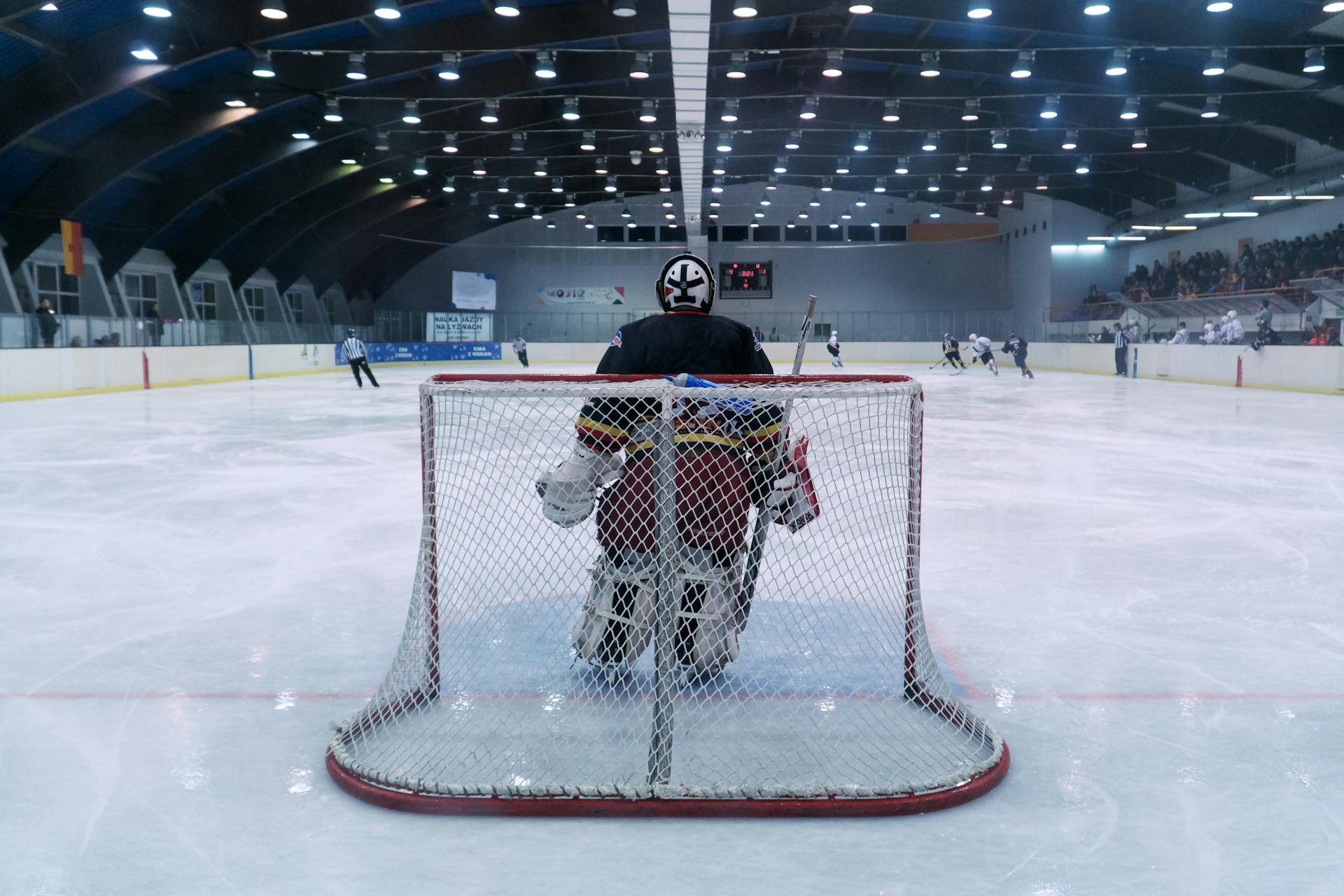Applying the Neuroscience of Cooperation: Cultivating Intrinsic Motivation Series with David P. Langford (Part 5)
- David Langford
- Education, Podcast
- 0 Comments

This podcast was originally published on In Their Own Words for The W. Edwards Deming Institute
Cooperation is built into the human condition – we don’t survive without it. In this episode, Andrew and David talk about the connection in our brains between intrinsic motivation and cooperation – and how you can use that to help cultivate intrinsic motivation in an extrinsic world (and even make your organization more competitive!)
TRANSCRIPT
0:00:02.9 Andrew Stotz: My name is Andrew Stotz and I’ll be your host as we continue our journey into the teachings of Dr. W. Edwards Deming. Today I am continuing my discussion with David P. Langford, who has devoted his life to applying Dr. Deming’s philosophy to education, and he offers us his practical advice for implementation. Today’s topic is, how to apply the neuroscience of cooperation. David, take it away.
0:00:31.3 David Langford: That sounds ominous to me. So…
0:00:35.1 AS: Impressive.
0:00:35.9 DL: Yeah, we’re not gonna do brain surgery, but we’ll get pretty close to that today, so…
[laughter]
0:00:40.4 AS: This is brain science.
0:00:42.5 DL: Yes. So we’re continuing this five-part series on intrinsic motivation. So Dr. Deming was adamant that intrinsic motivation was key, and that we’re all just born with intrinsic motivation, and it’s our systems and the people that we encounter over time that sort of drum it out of us. So how do you get it back, especially from people that have been beaten down from both the school systems and the businesses that they’ve been, et cetera? And Dr. Deming said, we have a right to joy in work and learning. And if that’s true, we have to try to create these environments to make great joy in the work environment. And why do you do that? Well, when you do that, you’re gonna get better productivity. You’re gonna get more output.
0:01:38.5 DL: People are gonna be happy, or they’re gonna stay longer. They’re not gonna be looking for other jobs, et cetera, et cetera. So it all makes perfect sense to me that you wanna concentrate on creating intrinsically motivating systems even though you might be in an extrinsic world all the way around you. So in the first session, we talked about control or autonomy or ownership as being key for intrinsic motivation. And there’s five key factors that we’re going through. And what I wanna impress upon people is that this is a system of intrinsic motivation. So it’s all of these factors together. Yes, you can just do one factor and get a result. For instance, you can just apply more cooperation and you’ll see a higher level of intrinsic motivation. But if you really wanna see people rise to the true heights of what they’re capable of or what their potential is, you have to think about all five of these factors.
0:02:40.5 DL: So that’s why we’re taking time to go through all these. Today we’re talking about cooperation. And that’s much different than setting up a competitive environment where people are competing for isolated resources or they’re competing for a medal, a gold star, et cetera, et cetera. But cooperation is built into the human condition, thousands of years ago when we first started creating villages and people working together, and people had to cooperate to make armies, people had to cooperate to build houses. There’s a myth about how the west was won in the United States, that it was the rugged individual, but yeah, there was some of that. But largely it was wagon trains of cooperative people coming west. And if they didn’t cooperate and worked together, they didn’t survive, the people that were the rugged individuals often perished either from native American attacks or just the environment itself. So cooperation, to me, is built into the human condition.
0:03:53.0 AS: And before you continue that, let me just ask you about competition versus cooperation. Is competition also built-in, or is cooperation more built in? I mean, that point you just made about how for survival, humans need to depend on each other to some extent as a society, but do humans need to compete with each other?
0:04:20.1 DL: Well, the great irony is, the better you cooperate, the better you compete.
[laughter]
0:04:27.7 DL: So if you’re at a corporation, for instance, or even a school, and the higher the level of cooperation that you foster and create, you actually do become competitive because you actually become better than other people in your field, et cetera.
0:04:43.2 AS: And how… I love that statement, the better you cooperate, the better you compete. How is that rooted in facts? Is that rooted in… It intuitively makes sense to me that a team or a group that really cooperates well together can achieve amazing things, but is it scientifically correct to say that?
0:05:13.6 DL: Well, can we point to… We could point to obviously numbers of examples of either schools or businesses, et cetera, that have high degrees of cooperation involved. You can get… You can seize part of the market in a competitive thinking or a competitive environment or pitting people against each other to achieve inside of an organization, but to me every example I ever looked at, it doesn’t last. Pretty soon, what Deming said is, the only people you’re left with are the people who can’t get a job someplace else.
[laughter]
0:06:01.2 DL: Because they’re not happy. It’s not fun. You don’t feel supported, so…
0:06:06.7 AS: And that brings us back to intrinsic in the idea that it’s inherent in us to want to be in a cooperative environment. Like we want to stay in a cooperative environment.
0:06:19.2 DL: Well, it’s more than that. When you think about the neuroscience involved, that when you’re in a cooperative environment, whether that’s a small team or a company or whatever it might be, there’s an endorphin released in your brain that actually makes you feel good. It’s a really good feeling. The opposite happens. There’s two different types of stress levels, and that’s a positive sort of stress level. It can still be very stressful work, hard work, et cetera, but when you’re working together to make that happen there’s a positive stress hormone that’s released in your brain. The opposite is true in competitive environments. So the only person that really actually gets that same kind of endorphin is the winner in a competitive environment. Everybody else becomes a demotivator.
0:07:14.9 AS: So it’s kind of the endorphin distribution is what it is about. David, I have a situation at my home where I have caregivers helping me take care of my mom. And one of the caregivers left almost eight years as a nurse at a hospital, because she said, “You really couldn’t give good care because of all the… Not only the competition amongst people, but also all the things that just took all of the joy out of it.” But also the point where you need to push the patient to do what they need to do is the point that everybody would give up. And now when she’s working here with my mom and she’s made tremendous progress with my mom, it’s like we’re high fiving and talking about how we’re cooperating. I’m looking at kind of bigger picture stuff she’s implementing, and mom is getting the benefit. And when you talked about endorphin and the neuroscience of it, I really kind of just felt that, and for the listeners and for the viewers, think about that time that you’ve cooperated and been successful and it’s worked, or even when you failed, but you are in it together. Like that is the endorphin released.
0:08:18.2 DL: Well actually, I think you should have her compete against other caregivers.
[laughter]
0:08:24.1 DL: And then to find out who is the best caregiver in… We laugh about that.
0:08:30.4 AS: Now for our trusted listeners out there, they know that you’re kidding, right?
0:08:33.3 DL: Yeah. So yeah, we laugh about that here, but people are actually caught in those environments, and those things are being pushed on them and pressured and et cetera. And just like what you just described, your mom’s caregiver finally just said, “Look, I’m outta here. I do not want this stressful environment. It’s not fun anymore, actually.” But I was also thinking about a presentation of a group of second graders, and they were talking about Deming principles that were in their classroom and all the kinds of things that they were doing. And somebody in the audience asked them a question and they said, “Well, how does it make you feel to work like this cooperatively and in a classroom like this, et cetera?” And this little boy without even hesitating said, “I really like the dolphins.” He meant endorphins.
[laughter]
0:09:36.7 AS: Fire up those dolphins.
0:09:38.8 DL: Yeah. But it was very clear that the teacher had been having discussions with them about that, about how do we feel about this when we cooperate and we sort of work together? So there’s… I kind of break it down and there’s two different kinds of cooperation we often see, we see natural and we see forced cooperation. So forced cooperation is like, “You, you, and you, get over there and start cooperating, and then we’re gonna see who’s the top cooperating group in the room,” and things like that. That’s sort of like competitive cooperation. Whereas natural cooperation is when you basically just set up the environment and encourage people to support and help each other, they will naturally seek out other people to work together.
0:10:33.5 DL: Now, you may… In education, you may have an objective that you want people to learn to work together with people that they wouldn’t normally work together. Okay, well, that’s a different aim that you’re trying to accomplish. And to do that, I would probably do something like just total random selection, just throw everybody’s name in a hat and draw out four names and this is your team. Because then everybody knows how team members were chosen to be in that. But where we get into trouble is when teachers think, “I have all the control and I have all the autonomy, and I’m… This is my role, and so I’m gonna pick people. I’m gonna pick this person to work with that person and this person.” And students of all ages, even all the way down to kindergarten, preschool, know they’re being manipulated [chuckle] when they do that because they can tell that I’ve obviously been put with this person because I’m supposed to be helping them or something.
0:11:38.7 DL: And so that’s not a good way to operate. Pretty soon you’ll just have people who hate being in teams, hate working with other people, et cetera, et cetera. Also, you won’t see a level of cooperation emerge if you’ve got a heavy duty grading system going on, ranking system in a corporation, et cetera. Because the bottom line is we’re all trying to survive in this world, and if the only way I can survive is to not work well with others, [chuckle] I will do that. So, a friend of mine was getting his MBA in Australia, and he was telling me that they would automatically get together and sort of form study teams with people that they already knew or they knew well, et cetera. But then they’d be in classes and the professor would assign certain books to read or something.
0:12:40.1 DL: And so some of the teams would send out part of their team over to the library to check out all the books so that none of the other team members in the class could have access to the books, or they would have to drive great distances to go to a different library to get the book. And we tend to point at individuals and wanna blame the individual, like, “Oh, well, look what defective people they are.” No, they’re in a defective system that’s forcing them to sacrifice their integrity to get an artificial scarcity of top marks in that class. And so when you see that kind of stuff going on, we always wanna blame the individual because that takes the pressure off of the system or the managers managing a system, whether that’s a classroom, a school, a company, or whatever it might be. You can just say, “Oh, well, just look at these defective people and the behavior that they’re having.” Well, 98% of the behavior is coming from the system itself. Don’t like the behavior, then change the system and you’ll see a different behavior emerge, or like what we’ve been taught to do in schools. We leave the system alone and then come up with all kinds of management systems to manage the behavior it’s producing, so isolation and putting kids outside in the classroom and depriving of recess and…
0:14:11.0 AS: It’s a good point because I think that there’s a lot of people in education and also in management that feel like, “Oh, it’s an endless cycle of trying to close loopholes that people are breaking through, they’re breaking our system, and it’s just endless.” And you see very intricate systems, well, we’ve got a way to deal with that. We’ve got a way to deal with that. They’re gonna be punished on this, they’re gonna be rewarded on that. And you realize that actually they’re causing all of this, and then they’re trying to fix it by tampering with all of these things out there. So when you set up a cooperative environment, it’s like you start to… You go back to the source and stop the cause of a lot of the issues that you’re dealing with.
0:15:01.5 DL: Yeah. I’ll never forget, one of my children was going to high school and she was in an honors chemistry class. Okay? So this is supposed to be the best of the best kids in the school. It was a very big school. They’re all in this chemistry class. Well, almost all these kids had a perfect 4.0 grade average at that time in that class. And they all knew that something’s gotta give because we’re not all gonna be valedictorians even though we would all be qualified for it. So my daughter came home the first day of the class and she said, “Dad, I think I’m really gonna like this chemistry class and the chemistry teacher and everything.” And he said, “We’re all top students. We all work together, we all wanna have great results in chemistry, everything.” And she said, “I think he might be really interested in some of your methods and concepts and et cetera.” So great. Second day of school, she came home, she said, “Dad, I think I’m gonna drop chemistry.”
[laughter]
0:16:08.1 DL: I said, “What happened in two days?” And she said, “Well, he spent the entire class explaining how he grades on a curve.” And I’ll never forget her face. She looked at me and she said, “Do they just think we’re complete idiots?” She said, “We’ve all had advanced math courses. We can’t all get A’s if you’re grading on a curve.” The process. So anyway, third day she comes back, she says, “Well, I think I’m gonna be one of the top people and I’ll probably get an A anyway because… So I’m gonna stay in the class.” So I didn’t hear much about the class until the end of the first semester. And she comes home the last week of the first semester, and she said, “Dad, you’ll never guess what happened.” And I said, “What?” And she said, “Well, a lot of the kids in the class that were on the borderline between grade levels, like from a C to a B or from a B to a… ” Especially a B to an A, well, not only had they kept track of their own performance, but they’d kept track of other kids’ performance also in the classroom.
0:17:24.0 DL: Were able to single out several individuals in the classroom that no matter what they got on the final, they were still gonna get a B or a C or a D. They could not even take the final and it wasn’t gonna change their status or their grade or whatever. But if they could get enough of these kids to do poorly on the final, it would bump some of these other kids up into the top grade level to get an A. And they actually paid kids in the class, [laughter] I can’t remember, it was like $20 or something to do poorly on the final.
0:18:03.8 AS: Oh my gosh.
0:18:05.2 DL: So anyway, the principal finds out, the teacher finds out and there’s this whole Spanish inquisition, and they’re bringing kids in and interrogating them and everything. I couldn’t resist it, I had to go in and talk to the principal and I said, “What are you doing?” He said, “Oh, we’re gonna have to kick these kids outta class ’cause they obviously cheated.” And I said, “They didn’t cheat. They played your game better than you.”
0:18:28.5 AS: [laughter] That really pissed him off.
0:18:30.4 DL: Yeah. These kids ought to be getting awards of student of the year. This was amazing, amazing thing that they figured out and doesn’t feel good because they turned the game back on you and found a way where we could cooperate at a high degree to get greater rewards.
0:18:49.0 AS: And the man behind the curtain has been revealed.
0:18:51.4 DL: Yeah. So, he didn’t like that at all. That teacher didn’t like that.
0:18:56.8 AS: Sure.
0:18:57.9 DL: And… Oh yeah. So it was later on that year that I had to go in to talk to the principal about something else. And he said to me, jokingly, I think he said, “I know I’m having a bad day when your car is in the parking lot.”
[laughter]
0:19:12.9 AS: Langford! Now let me ask you, in wrapping this up, I just wanna think about the educator out there who likes what they’ve heard, but they are operating in somewhat of a competitive environment. What would be kind of step number 1, 2, 3 that they could do to begin to bring a more cooperative environment into their classroom?
0:19:35.1 DL: Well, you have to start looking at what are the barriers to cooperation that are going on in your classroom? Are they outside barriers, outside forces? You may have awards and all kinds of things that are going on, but you don’t have to emphasize those. [chuckle] You don’t have to daily say, “Well, if you don’t get your work done, you’re not gonna win the award.” And constantly go over that kind of stuff. Instead identify that learning is the aim or the goal, and we’re all here to get high levels of learning. I think also there’s this misnomer about teams and teamwork. And we think that just because we put people in a team that that’s teamwork or cooperation. And that’s not really true either. Unless you’re actually teaching and training people how to work in a team cooperatively would help set people up. I know many, many students that just almost refuse to be in teams, even at the university level because they say, “I end up doing all the work and then I got these three slackers that’ll just go along and we all get the same grade.”
0:20:44.1 AS: Right.
0:20:44.1 DL: That’s another just convoluted process. On the other hand, if you want people to work well together, then start thinking about, how do you set up an environment so people will naturally work well together? So I created a tool in my tool time book called Code of Cooperation. And it’s pretty simple. You just start off asking everybody, what leads to a high degree of cooperation? What would it be like in this class? And you just list those things off but that sort of becomes the code of how you operate. And that’s a different message right at the very beginning of the class that, here’s our code of cooperation and we can talk about it when we sort of start to fall down and not cooperate.
0:21:40.3 AS: Okay, great. So maybe I’ll summarize some of the things that we talked about. The first thing that I was thinking about when you… I love the statement, intrinsic motivation is beaten out of us, basically. It’s like we set up systems that destroy that for most and that people have a right to joy in learning. And ultimately when that happens, there’s better output. Now, we had talked about control, autonomy, ownership previously, and these are kind of foundational things that begin to lead into cooperation. And then you talked about the different factors and understanding that really there’s a system of intrinsic motivation, and you wanna try to apply all the different parts of that system. And so the thing that I thought was interesting was the idea of cooperation is different from setting up a system of competition, like competition for resources as an example.
0:22:42.0 AS: Now you said something that I thought was interesting also, which is the better you cooperate, the better you compete. And I was thinking about in one of my courses, I don’t have them do group work, I have them do group support on their individual work. And the end result of that is they really become very close to each other. And so I was thinking that cooperation leads… Competition leads to a lifetime of enemies and cooperation leads to a lifetime of friends. And that partially tells you why the endorphin release is such a major thing. And then you talked about forced versus natural and you wanna set up that natural environment and oftentimes we blame the participants in the system rather than blaming the system. And as you’ve described the idea of students are really good at gaming the system.
0:23:39.3 AS: And finally, I asked you for some implementation ideas, and you talked about, first for those educators out there, look for barriers that are outside the things that are putting competitive pressures on the students and deemphasize those in your classroom. Those are fine. Let them do that outside, whatever, but try to deemphasize that. The other thing is to understand that teamwork is a cop out for teachers oftentimes because it just ends up work going on to individuals. So don’t necessarily think that, “Hey, we’re gonna set up teams that’s gonna lead to cooperation.” And number three was, how do you set an environment for cooperation? Ask this question to the students, discuss it, and when you do, you’re gonna come up with a more cooperative environment. Anything you would add to that?
0:24:27.5 DL: Just lastly in Dr. Deming’s System of Profound Knowledge, understanding variation is really critical. And if you are setting up a system where you have an artificial scarcity of top marks or top grades, you will not see people cooperate to a very high degree and really they can’t. So you always have to be cognizant of the System of Profound Knowledge when you look at these things ’cause it’s telling you what to stop doing, [chuckle] and what to start doing.
0:25:01.4 AS: And for educators and managers out there, it’s hard to break free from those systems. But if you first just become aware that that bell curve is forcing the grading on that curve or we get rid of… We give bonuses to our ‘A’ employees and we kick out our ‘C’ employees, like these types of structures that are built into systems is what Dr. Deming taught about, that you don’t have to become aware of these things and the influences, you may not be able to change them right away. So, great point.
0:25:34.2 DL: Well, you’re always gonna have the bell curve no matter what system you set up or whatever, but the real aim is to move the whole bell curve up. So now I have only a finite number of people doing top level work or ‘A’ work or the best type work. I’m actually moving the whole system up so I have a greater and greater number of people all reaching that level.
0:25:58.0 AS: Yeah. So it’s like the application of the bell curve, it’s a tool to understand what’s going on, but it’s not a tool that works for rewarding and punishing, which seems like that’s what we see when we see a bell curve oftentimes.
0:26:12.7 DL: That sounds like a whole ‘nother podcast right there, so…
0:26:15.5 AS: Boom, we’re gonna be rolling into the next one on that, I think. All right. Well, David, on behalf of everyone at the Deming Institute, I wanna thank you again for this discussion. And for listeners out there, remember to go to deming.org to continue your journey. Listeners can learn more about David at langfordlearning.com. This is your host, Andrew Stotz, and I’ll leave you with one of my favorite quotes from Dr. Deming, and it’s particularly pertinent to our discussion today, People are entitled to joy in work.









